Hazard Simplification Survey Instrument
Generic Clearance for NWS Customer Surveys
0648-0342 HazSimp Survey Instrument
Hazard Simplification Survey
OMB: 0648-0342
OMB Control No. 0648-0342
Expiration Date: XX/XX/202X
Paperwork Reduction Act
A Federal agency may not conduct or sponsor, and a person is not required to respond to, nor shall a person be subject to a penalty for failure to comply with an information collection subject to the requirements of the Paperwork Reduction Act of 1995 unless the information collection has a currently valid OMB Control Number. The approved OMB Control Number for this information collection is 0648-0342. Without this approval, we could not conduct this survey. Public reporting for this information collection is estimated to be approximately 1-5 minutes per response, including the time for reviewing instructions, searching existing data sources, gathering and maintaining the data needed, and completing and reviewing the information collection. All responses to this information collection are voluntary. Send comments regarding this burden estimate or any other aspect of this information collection, including suggestions for reducing this burden to the National Weather Service/Analyze, Forecast and Support Office, [email protected].
Survey Instrument
Introduction
Thank you for taking time to provide feedback on how we can improve our messaging! The National Weather Service (NWS) currently uses “Watch”, “Warning”, and “Advisory” headlines to alert the public of weather and water hazards.
The NWS Hazard Simplification (Haz Simp) project has conducted extensive research on how we might improve our alerting system. In 2021, based on this research and feedback from our partners and public, the NWS decided to discontinue the “Advisory” headline in favor of plain language headlines (add examples). NOTE: This change will not be made before 2024.
This survey will ask for your feedback on how NWS should display Watches, Warnings, and the forthcoming plain language headlines. Feedback will inform how NWS alerts will be displayed on maps and forecast pages in the future.
National Hazards Display
Are you familiar with the national display of hazard alerts (see example shown below)?
Yes
No (If no, skip #2)
How often does the national display of hazard alerts contribute to your decision-making or work
Often
Occasionally
Never
Please select the number that indicates your degree of satisfaction or dissatisfaction.
|
Extremely Dissatisfied |
Dissatisfied |
Neither Satisfied nor Dissatisfied |
Satisfied |
Extremely satisfied |
Ease of understanding the national display of hazard alerts |
1 |
2 |
3 |
4 |
5 |
Ease of applying the national display of hazard alerts to your decision-making or work |
1 |
2 |
3 |
4 |
5 |
Overall satisfaction with the national display of hazard alerts |
1 |
2 |
3 |
4 |
5 |
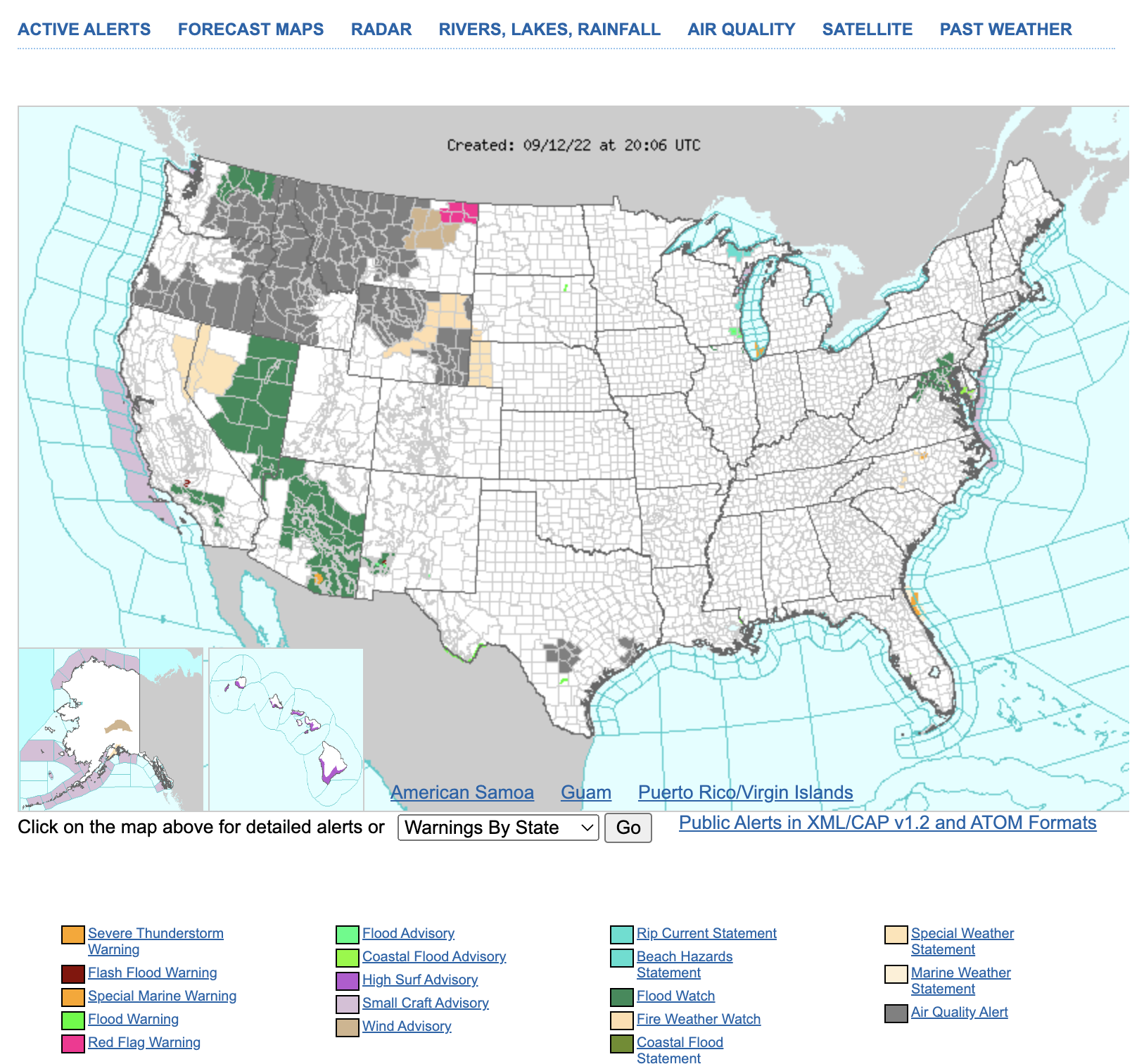
Display Options for Hazards Map
The national and local display of hazard alerts will be adjusted as NWS transitions away from the Advisory term to plain language headlines. We are seeking feedback on potential options for future map displays. These options are for demonstration purposes only. In reality, the maps below would be shown at a national scale, but for ease of visualization they are zoomed into a particular region.
Please review the following (4) four options and consider the questions below.
Which option do you think would be most useful to your decision making?
A
B
C
D
Which option do you think would be least useful to your decision making?
A
B
C
D
Option A
Color-coded by hazard type with all Watches, Warnings, and plain language headlines
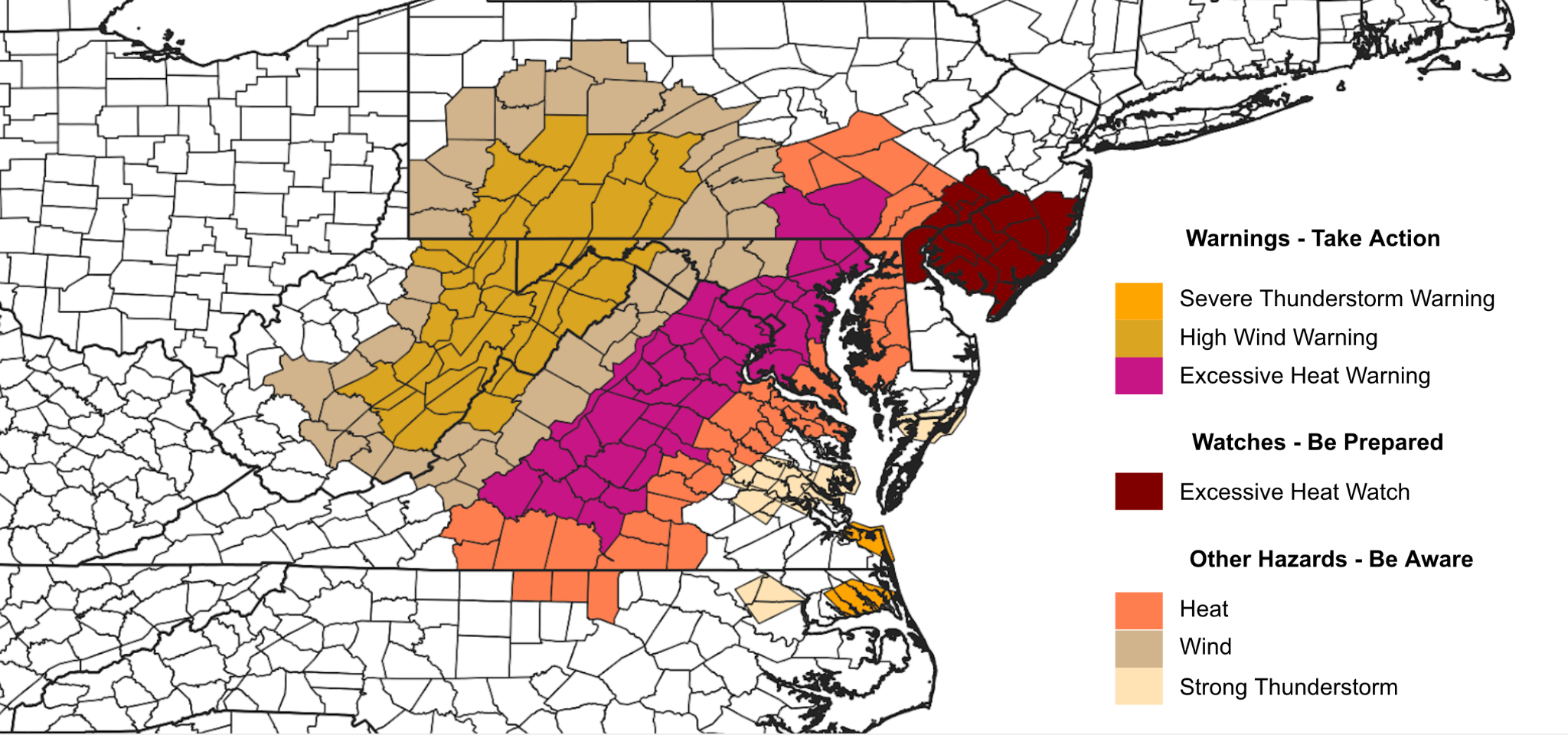
Option B
Color-coded by hazard type for Watches and Warnings. Plain language headlines all appear as gray on the national map.
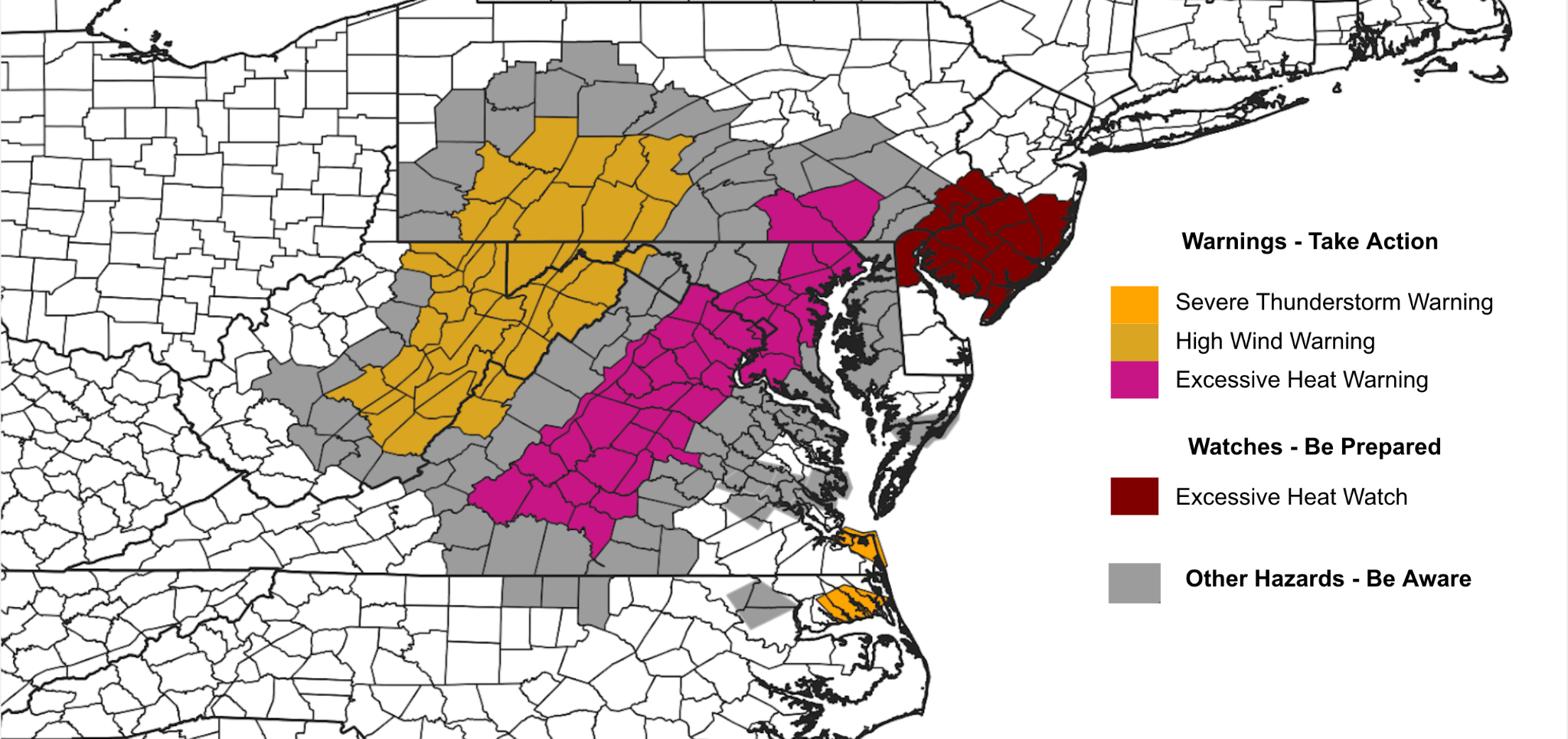
Option C
Only Watches and Warnings appear on the national map (color-coded by hazard type)
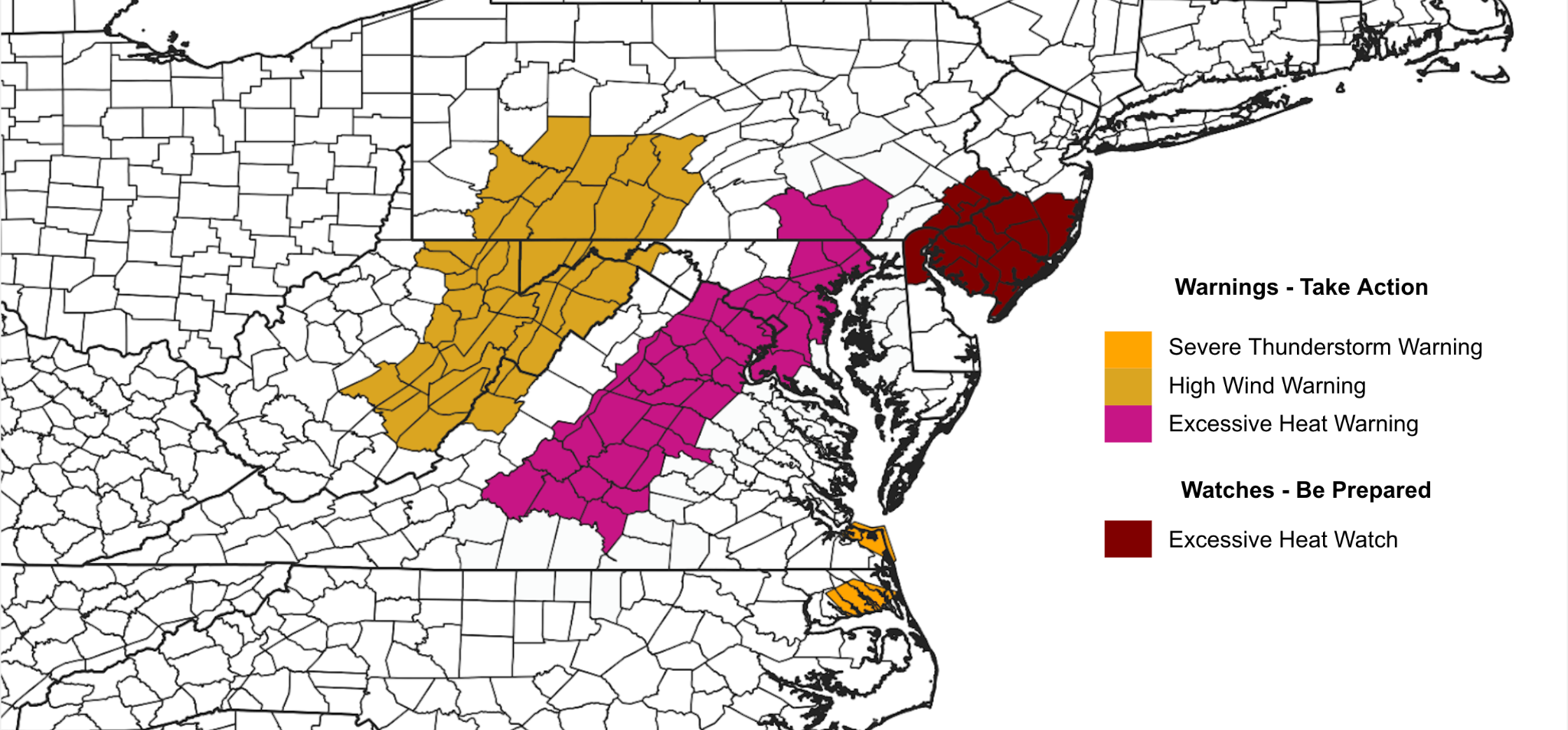
Option D
All Watches appear as yellow, all Warnings appear as red, and all plain language headlines appear as gray.
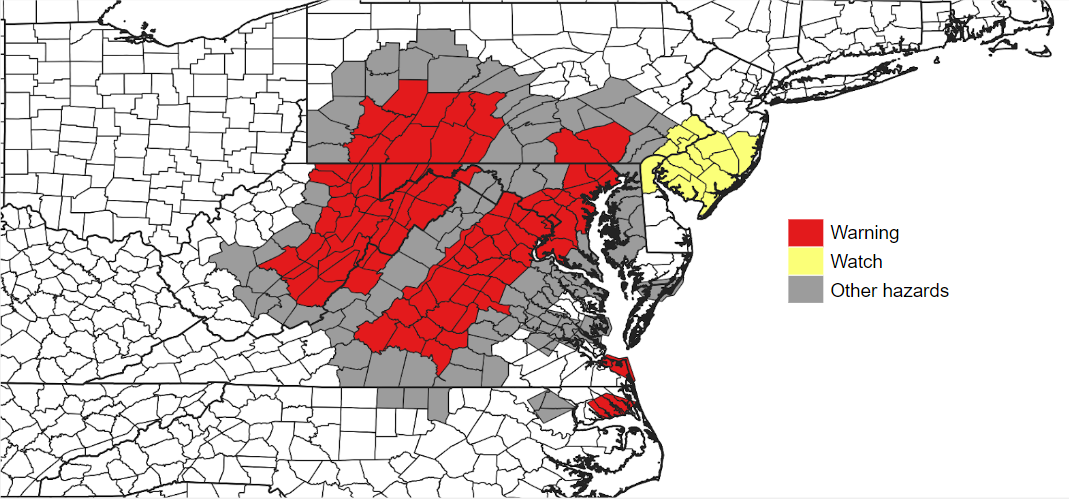
Local Forecast Pages
The below image shows an example of a local forecast display. Currently, Advisories are colored orange, Warnings are red, and Watches are yellow.
Are you familiar with this local forecast display shown below?
Yes
No (If no, skip #9)
How often does the national display of hazard alerts contribute to your decision-making or work" with answers
Often
Occasionally
Never
Please select the number that indicates your degree of satisfaction or dissatisfaction.
|
Extremely Dissatisfied |
Dissatisfied |
Neither Satisfied nor Dissatisfied |
Satisfied |
Extremely satisfied |
Ease of understanding the local forecast display |
1 |
2 |
3 |
4 |
5 |
Ease of applying the local forecast display to your decision-making or work |
1 |
2 |
3 |
4 |
5 |
Overall satisfaction with the local forecast display |
1 |
2 |
3 |
4 |
5 |
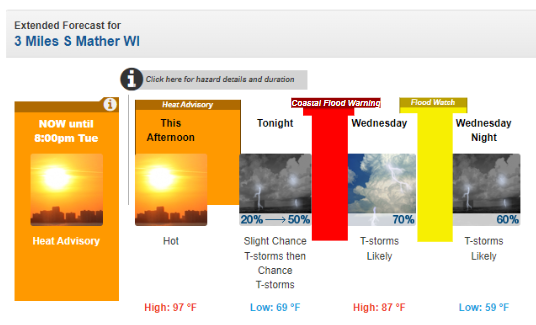
Display Options for Local Forecast
The local forecast display of hazard alerts will be adjusted as NWS transitions away from the Advisory term to plain language headlines. We are seeking feedback on potential options for change. These options are for demonstration purposes only.
Please review the following (3) three options and consider the questions below.
Which option do you think would be most useful to your decision making?
A (plain language headlines in gray color)
B (plain language headlines in black outline)
C (no display of plain language headlines)
Which option do you think would be least useful to your decision making?
A (plain language headlines in gray color)
B (plain language headlines in black outline)
C (no display of plain language headlines)
Option A
Plain language headlines displayed on the local forecast in a gray color. Watch and Warning would retain their current colors (Warning - red, Watch - yellow)
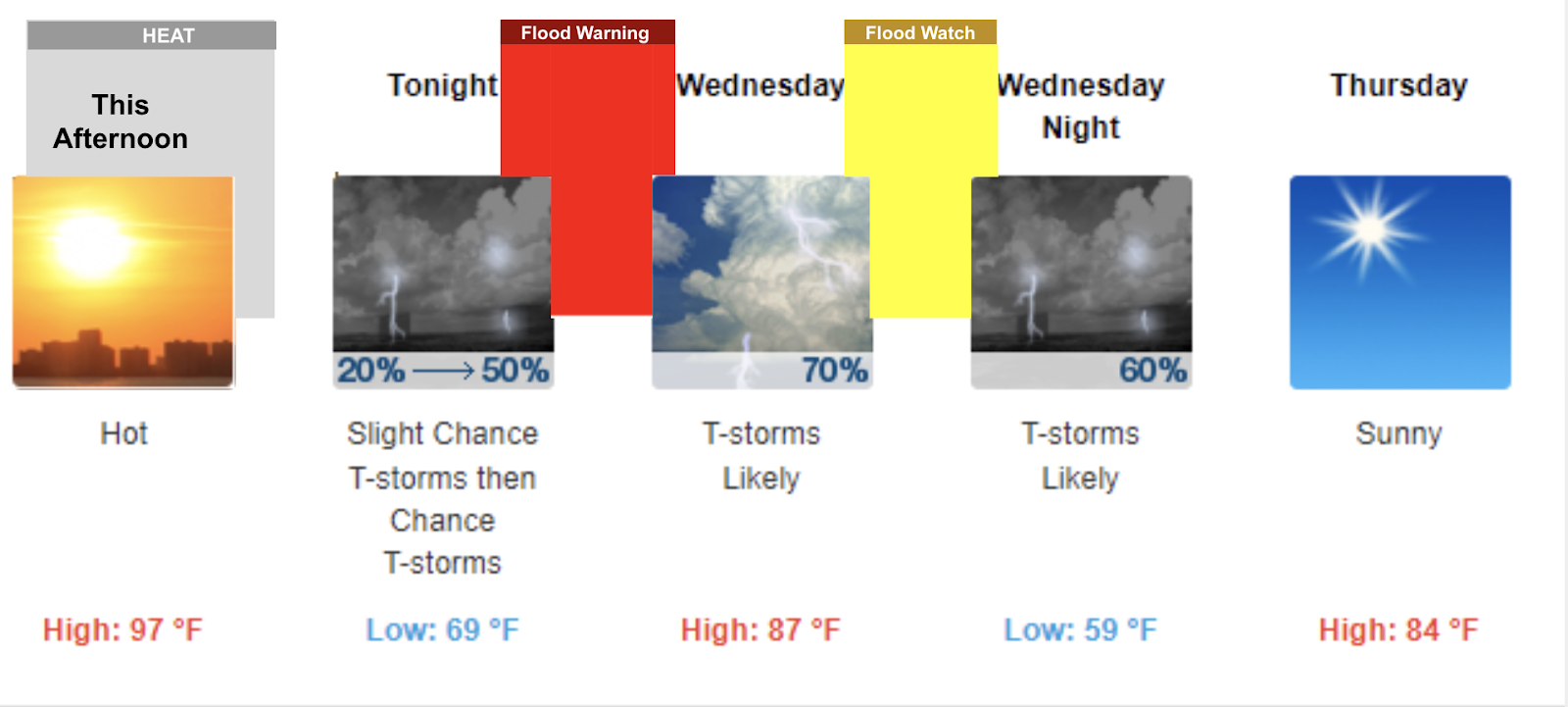
Option B
Plain language alerts displayed on the local forecast in a white box with black outline. Watch and Warning would retain their current colors (Warning - red, Watch - yellow)
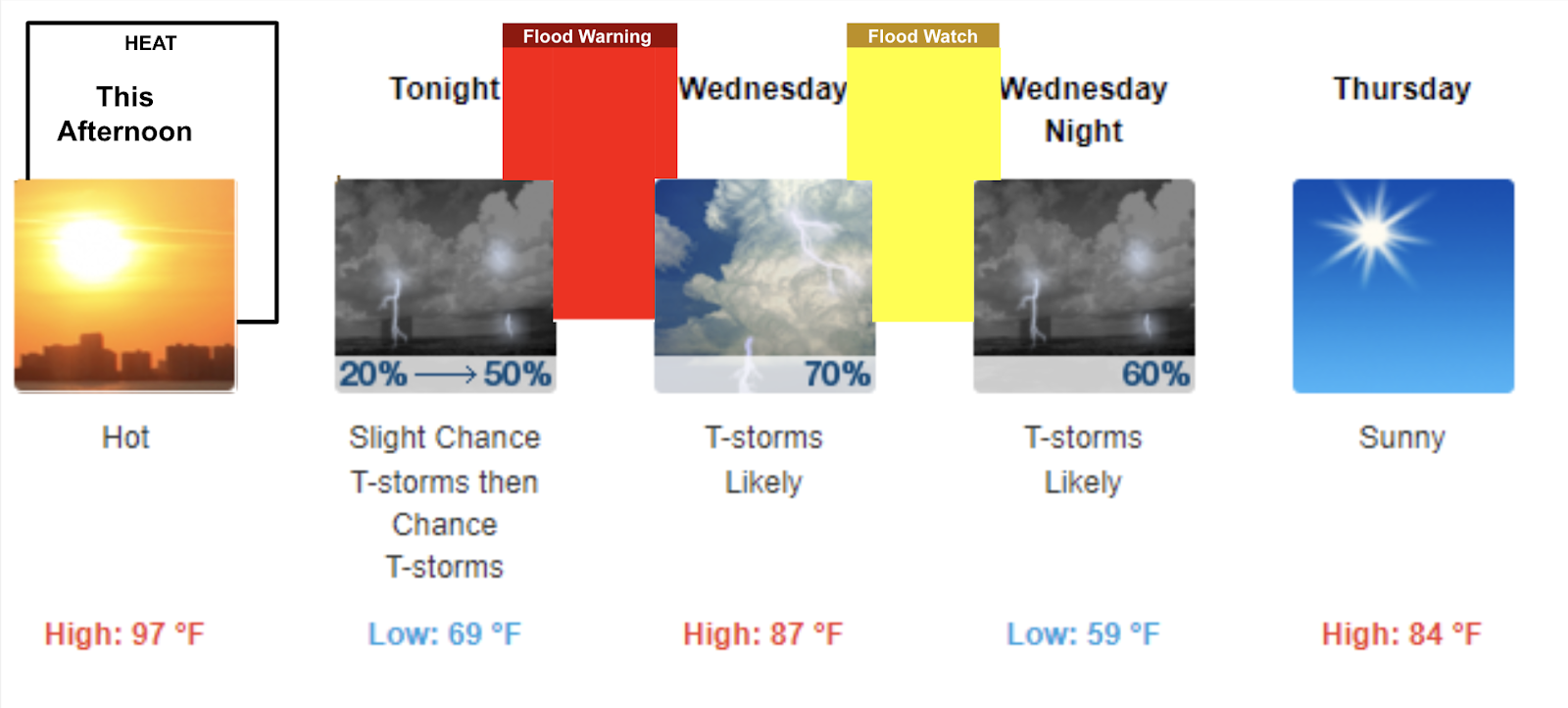
Option C
Only the Watch and Warning would be displayed on the local forecast and they would retain their current colors (Warning - red, Watch - yellow)
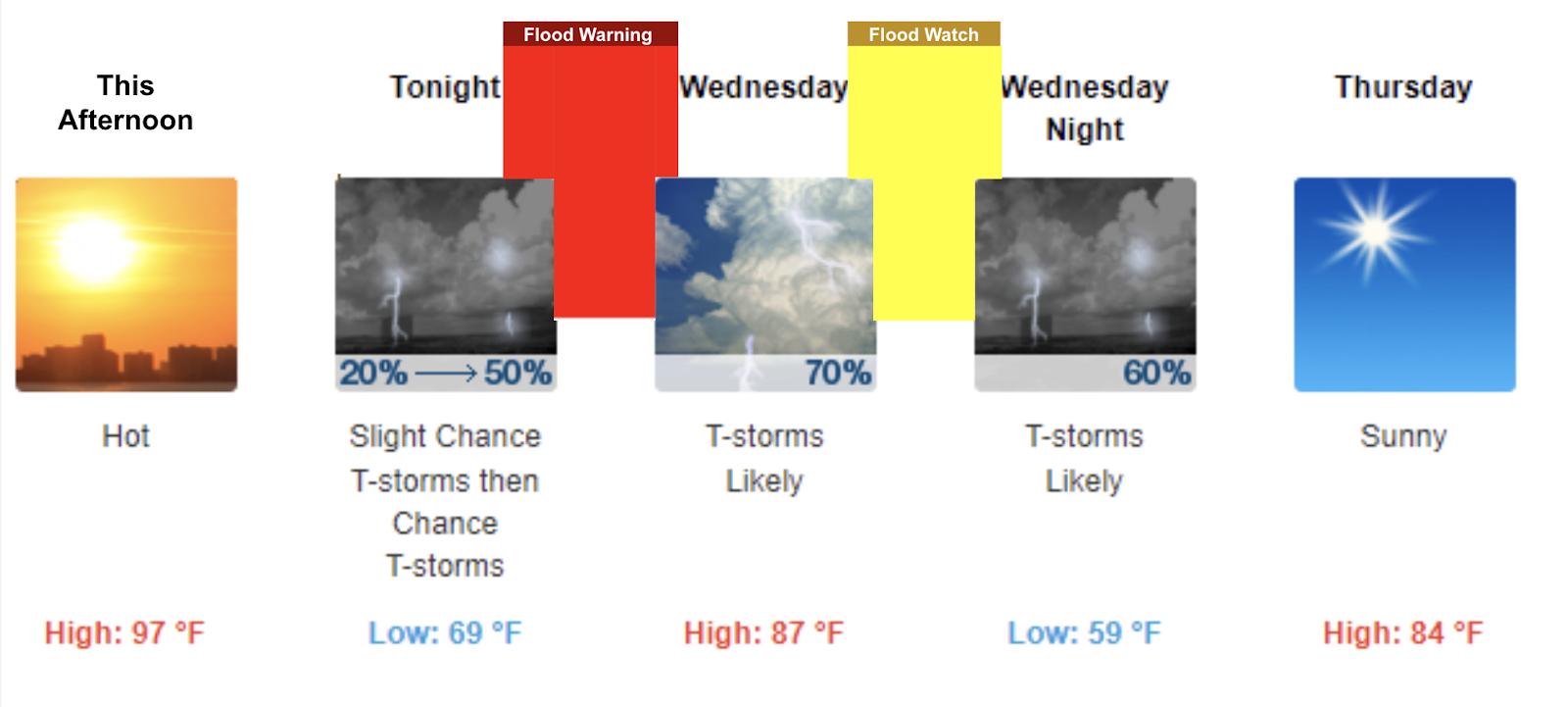
Hazards Banner on Local Forecast Page
Are you familiar with the pink “Hazardous Weather Conditions” banner at the top of your local forecast page shown below? Note - This is an example and not necessarily specific to your location.
Yes
No (If no, skip #14)
Please select the number that indicates your degree of satisfaction or dissatisfaction.
|
Extremely Dissatisfied |
Dissatisfied |
Neither Satisfied nor Dissatisfied |
Satisfied |
Extremely satisfied |
Ease of understanding the banner |
1 |
2 |
3 |
4 |
5 |
Ease of applying the banner to your decision-making or work |
1 |
2 |
3 |
4 |
5 |
Overall satisfaction with the banner |
1 |
2 |
3 |
4 |
5 |
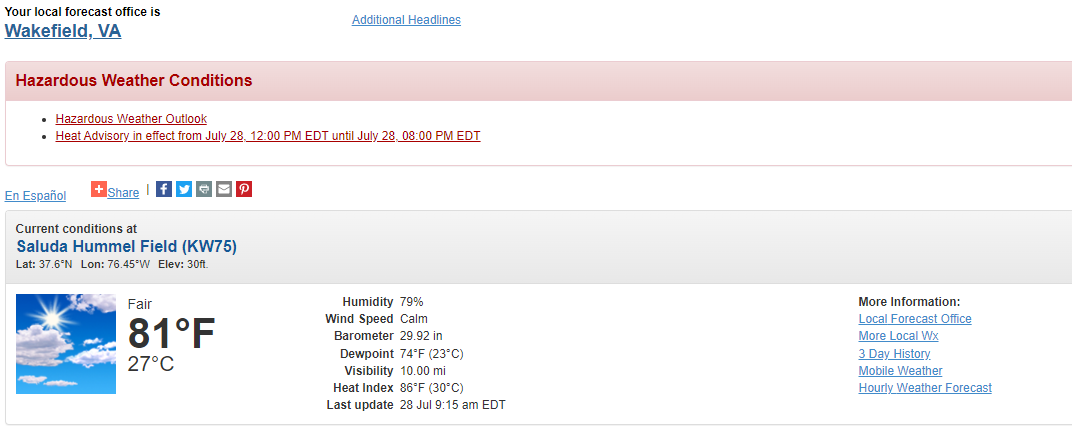
Display Options for Banner
The pink “Hazardous Weather Conditions” banner at the top of your local forecast page will be adjusted as NWS transitions away from the Advisory term to plain language headlines. We are seeking feedback on potential options for change. These options are for demonstration purposes only.
Please review the following (2) two options and consider the question below.
Which option do you think would be most useful to your decision making?
A: Plain language headline is shown in the banner
B: Plain language headline is NOT shown in the banner
Option A:
Hazardous Weather Conditions
High Wind Warning in effect from June 15, 06:00 AM until June 15, 09:00 PM MDT
HEAT: Heat index values up to 100F from June 14, 11:00 AM until June 14, 08:00 PM CDT
Option B:
Hazardous Weather Conditions
High Wind Warning in effect from June 15, 06:00 AM until June 15, 09:00 PM MDT
Example of local forecast page for context:
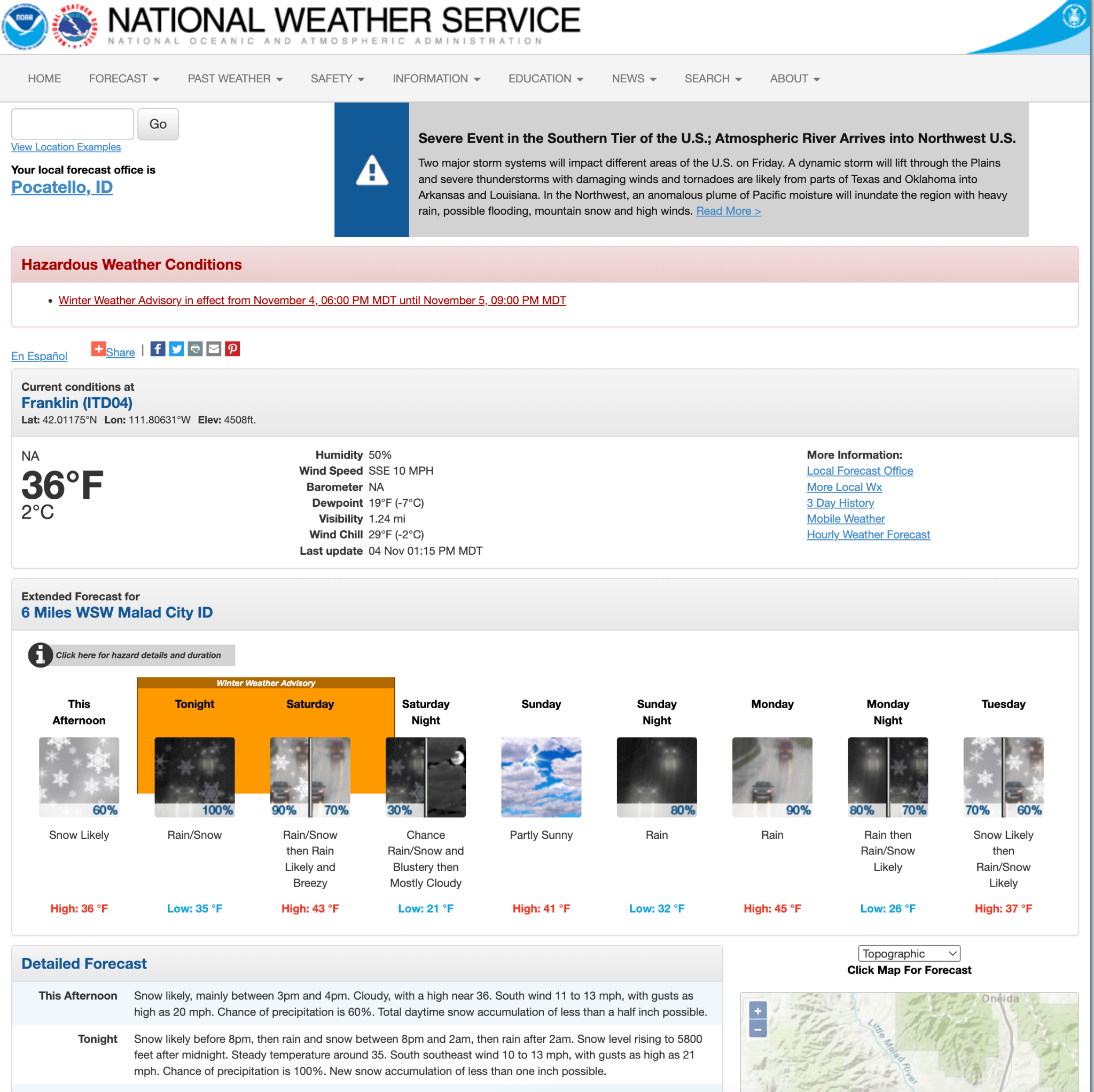
Final Question
What can NWS do to improve the way we display our alerts?
| File Type | application/vnd.openxmlformats-officedocument.wordprocessingml.document |
| Author | Monica S. Waddell |
| File Modified | 0000-00-00 |
| File Created | 2024-07-20 |
© 2025 OMB.report | Privacy Policy